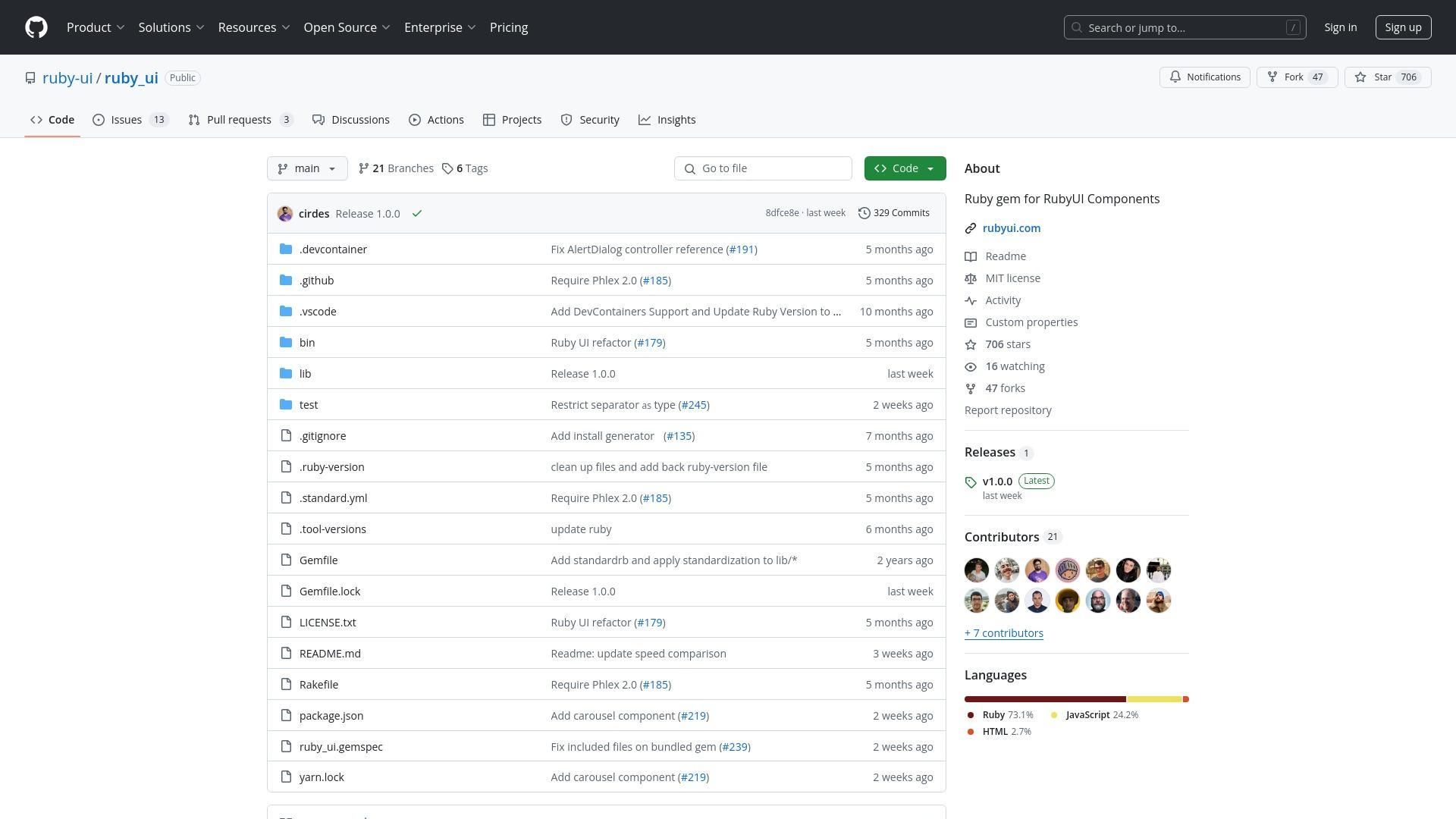The Ruby web development community is showing significant interest in RubyUI (formerly PhlexUI), a collection of reusable UI components built on the Phlex rendering engine. However, alongside praise for its developer experience, a heated debate has emerged regarding the project's performance claims.
RubyUI presents itself as a solution for Rails developers looking to build beautiful, organized UI components that can be easily copied and customized. Unlike traditional component libraries, RubyUI encourages developers to take ownership of the code by copying components directly into their projects.
Performance Claims Under Scrutiny
One of the most contentious aspects of RubyUI is its claim of being up to 12x faster than traditional Rails ERB templates. This assertion has sparked significant debate within the community, with several developers challenging its accuracy.
A particularly insightful exchange in the community highlighted the nuance behind these performance claims. One developer pointed out that while Phlex (the engine powering RubyUI) may outperform ActionView in specific scenarios with numerous small components, it isn't universally faster than ERB. Joel Drapper, a key figure in the Phlex ecosystem, acknowledged this distinction:
In my experience, it's not an extreme scenario to render several thousand components in a single view... ActionView gets very slow when you build views like that composing thousands of partials — and for people who want to build views like that, it matters.
This clarification suggests that the performance benefits are context-dependent and most noticeable in applications with highly componentized views.
RubyUI Key Features
- Built on Phlex rendering engine
- Customizable UI components
- Copy-and-paste implementation approach
- Minimal dependencies using custom Stimulus.js controllers
- Installation via Ruby gem
Performance Comparison (according to project claims)
- Phlex: Baseline
- ViewComponent: ~1.5x slower
- ERB Templates: ~5x slower
Notable Projects Using Phlex
- Clearscope: 454+ components
- MagicNotes.ai
- Baheth.ieasybooks.com
Developer Experience Driving Adoption
Despite the performance debate, many developers are embracing RubyUI and Phlex primarily for the improved developer experience. The ability to write UI components in pure Ruby rather than switching between Ruby and ERB templates appears to be a significant draw.
Community members report that using private methods as partials has been a game changer for refactoring UI, and several developers mentioned they're already using Phlex in production applications. The project's GitHub page lists Clearscope as the largest application using Phlex views exclusively, with over 450 components.
Component Architecture Considerations
The RubyUI approach encourages a highly granular component structure, where developers might create separate components not just for major page sections like headers, but for individual navigation items and even icons. This level of abstraction represents a shift in how Rails applications structure their views.
While some developers appreciate this granularity, others have raised questions about practical considerations like namespace management and component organization. The community is still establishing conventions around these architectural patterns, with one developer noting that because it's new, there are fewer conventions, so you have to come up with them and be consistent.
As RubyUI continues to gain traction, the Ruby community will likely develop more established patterns for effectively utilizing this component-based approach. For now, the project represents an interesting evolution in Rails frontend development that prioritizes developer experience while pushing the boundaries of view rendering performance.
Reference: RubyUI (former PhlexUI)
